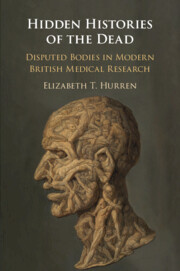Bibliography
Published online by Cambridge University Press: 18 February 2021
Summary
- Type
- Chapter
- Information
- Hidden Histories of the DeadDisputed Bodies in Modern British Medical Research, pp. 274 - 294Publisher: Cambridge University PressPrint publication year: 2021
- Creative Commons
- This content is Open Access and distributed under the terms of the Creative Commons Attribution licence CC-BY-NC-ND 4.0 https://creativecommons.org/cclicenses/



